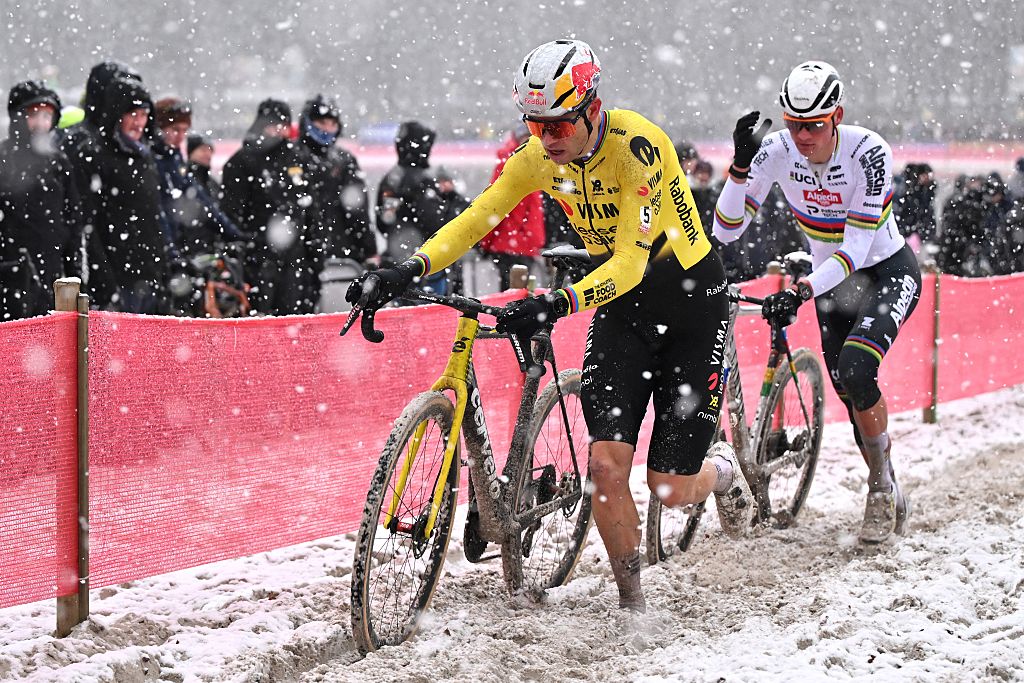Best smart bikes 2025: Hit your training goals without leaving home
Our experts test the best smart bikes, with in-depth comparisons and advice on choosing the right one for you
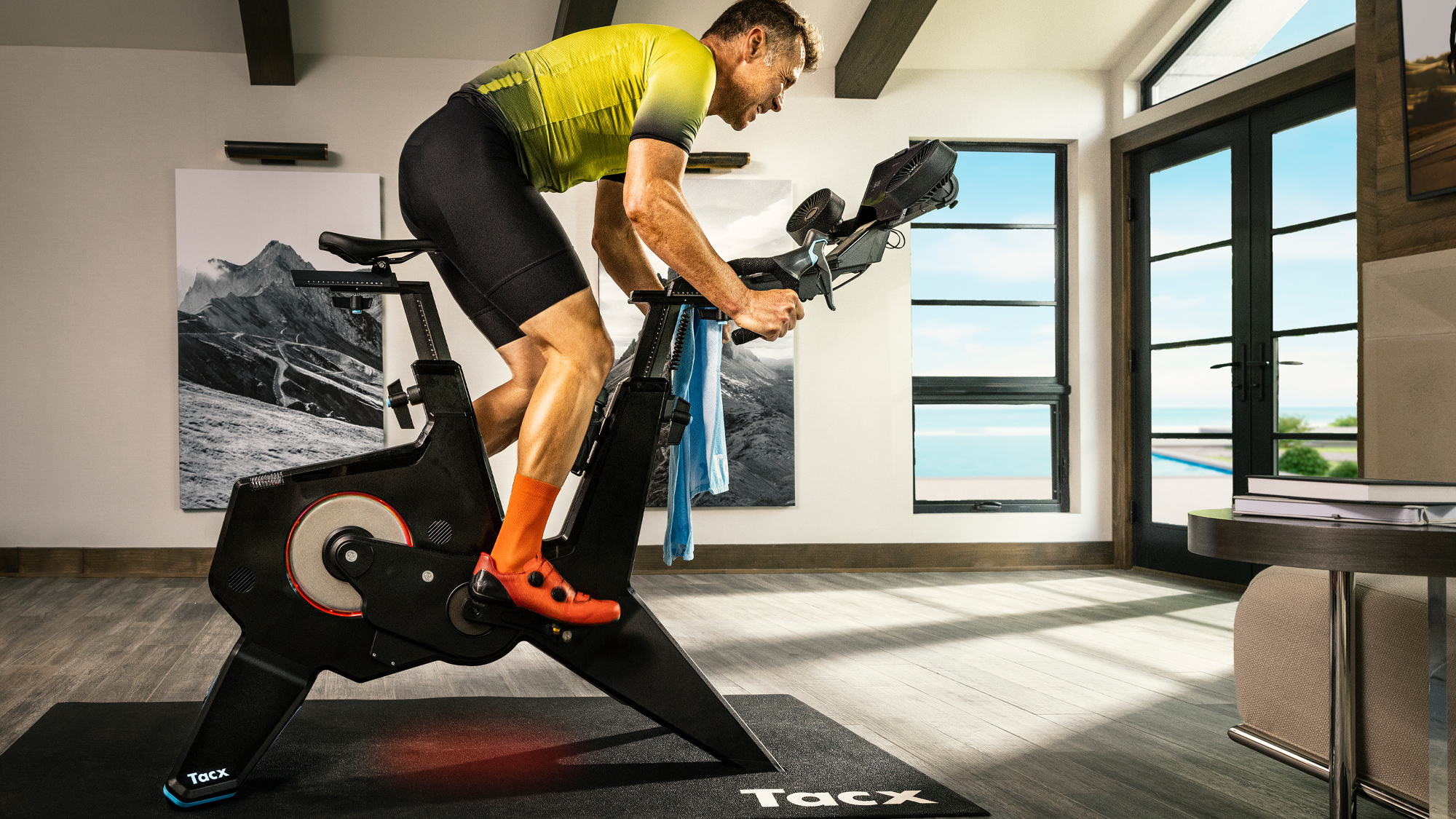
Feature-rich and offering a wide range of connectivity options, the best smart bikes are designed to simulate outdoor riding while also optimising your workout.
They share many of the same well-integrated ecosystems for tracking your sessions as the best smart trainers. The best smart bikes take it to the next level. Rather than connecting your outside bike to a trainer, smart bikes integrate the bike into the system, with some providing advanced features such as tilting to replicate climbs and imitating the shifting of various gearing styles.
Smart bikes can offer huge amounts of value in terms of tracking progress and improving performance. These are the bikes for those wanting to maximise their time in the saddle to make some big leaps in their training, or just get fitter without needing to leave home and brave the weather and the traffic.
Our top pick is the Wahoo Kickr Bike Pro. The combination of virtual drivetrain customisation and gradient replication makes it the best option for riding indoors. Alternatively, suppose you're only interested in training and racing. In that case, the Tacx Neo Bike Plus is a better option with a dual-sided power meter, accurate ERG performance and built-in fans.
There is a lot to consider when choosing the best smart bike. Here at Cyclingnews, we've ridden and reviewed a wide range of different options and are regular users of the tech, so we can help point you in the right direction.
Quick list: Best smart bikes
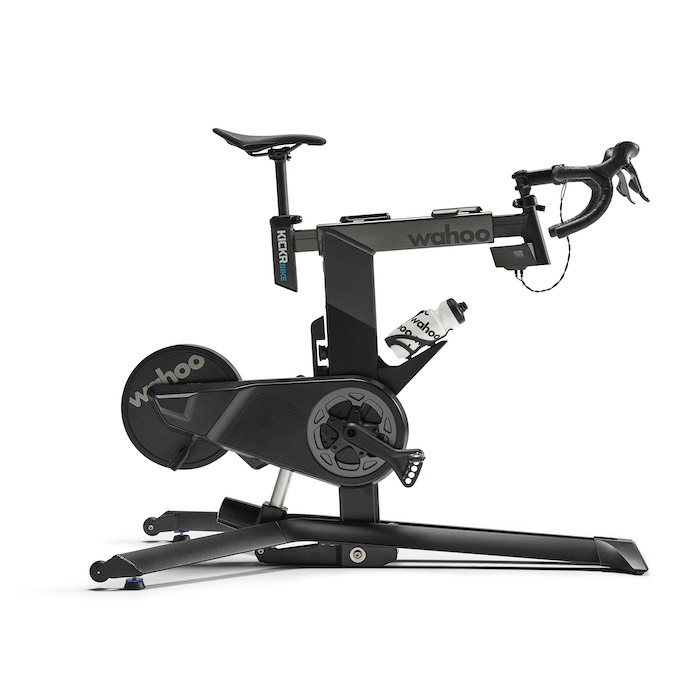
The Wahoo Kickr Bike Pro is a high-end choice that even tilts to replicate climbs to enhance your indoor experience.
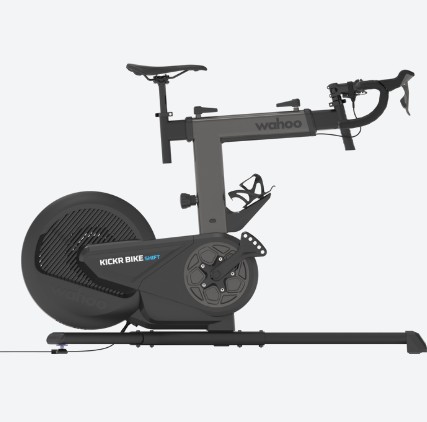
The Wahoo Kickr Bike Shift omits tilting for a more affordable option with much of the same functionality.
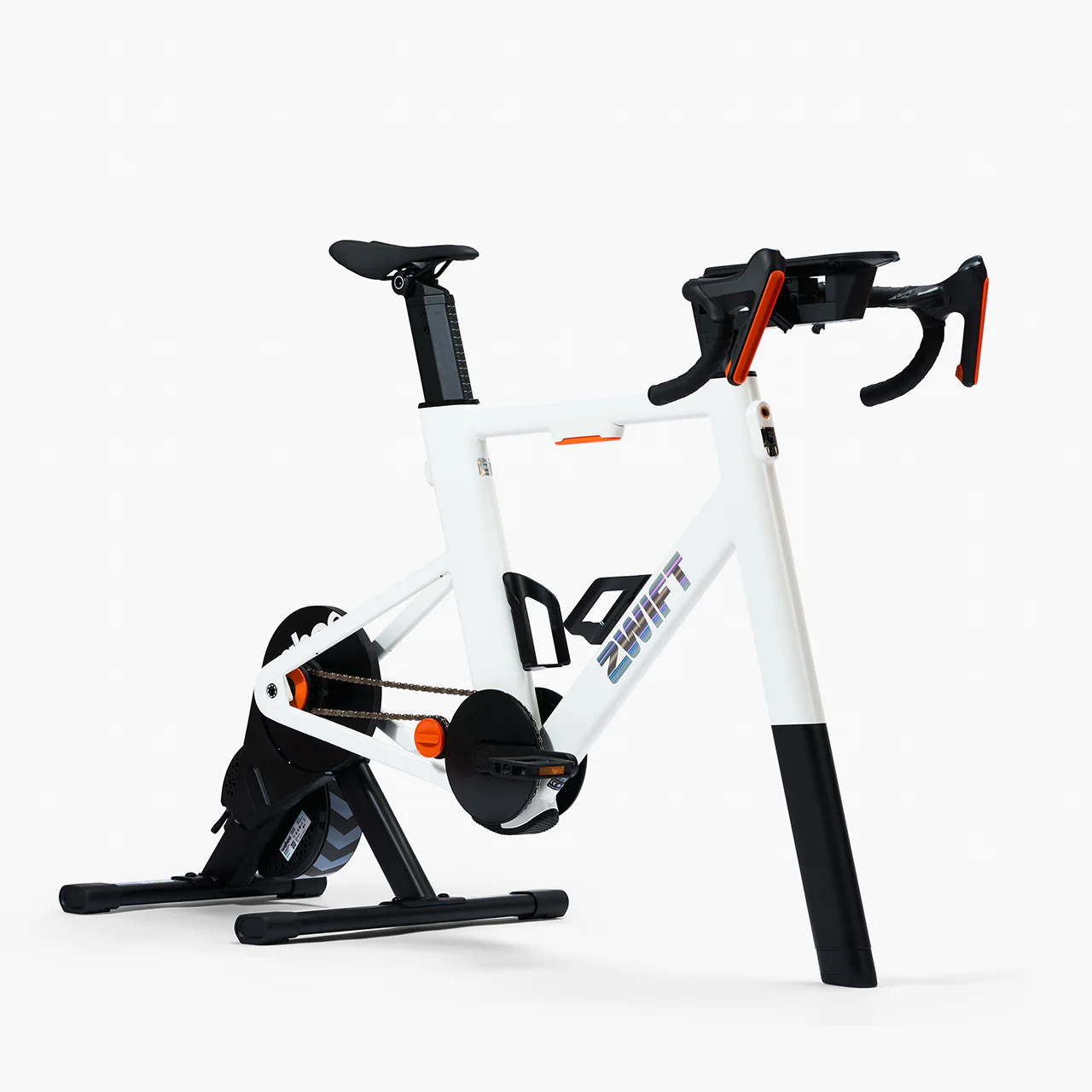
The Zwift Ride smart frame will fit on newer models of several trainers or is also sold with a Kickr Core.
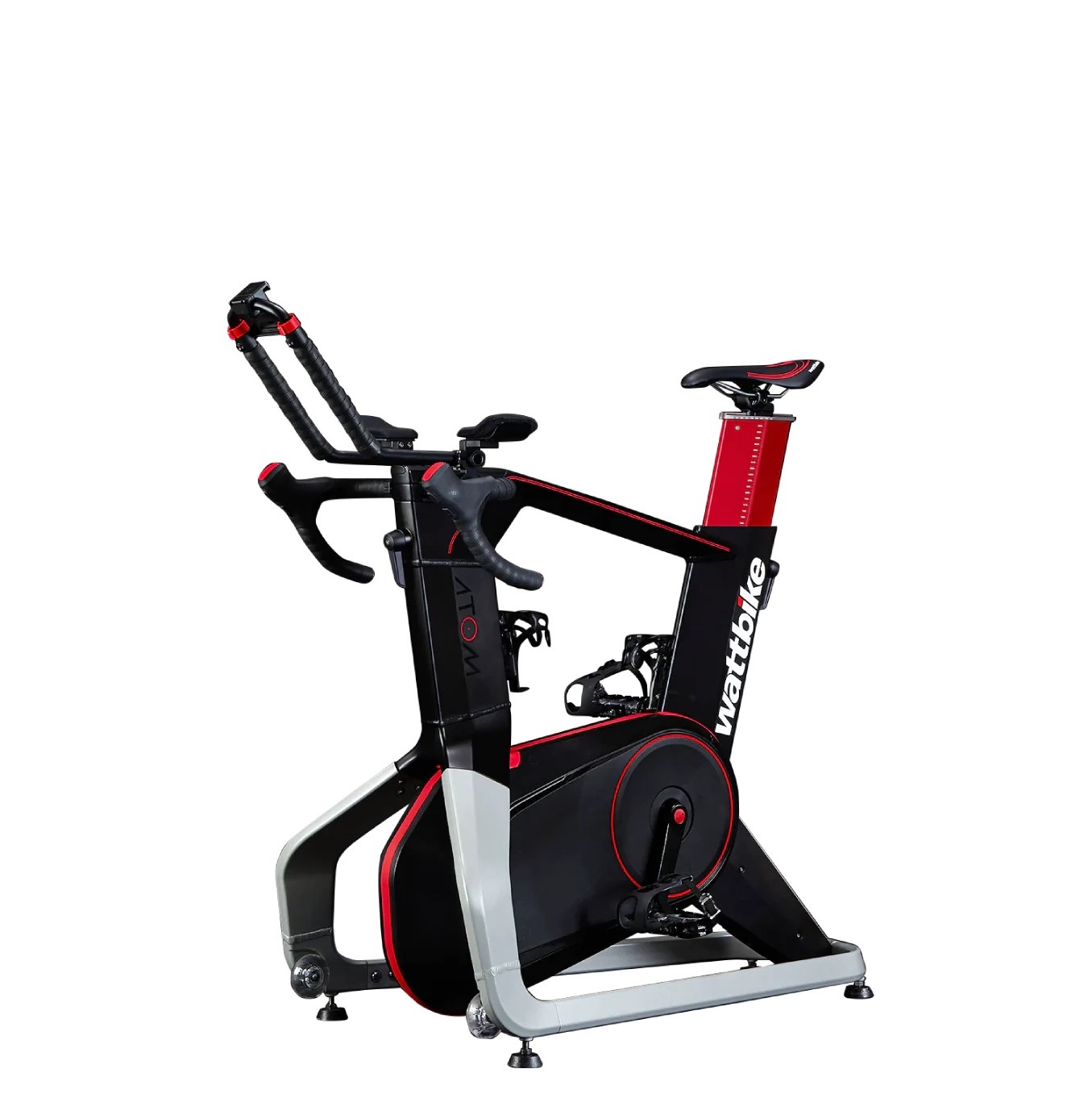
The Wattbike Atom offers a lot to the serious rider, including detailed pedal stroke analysis.
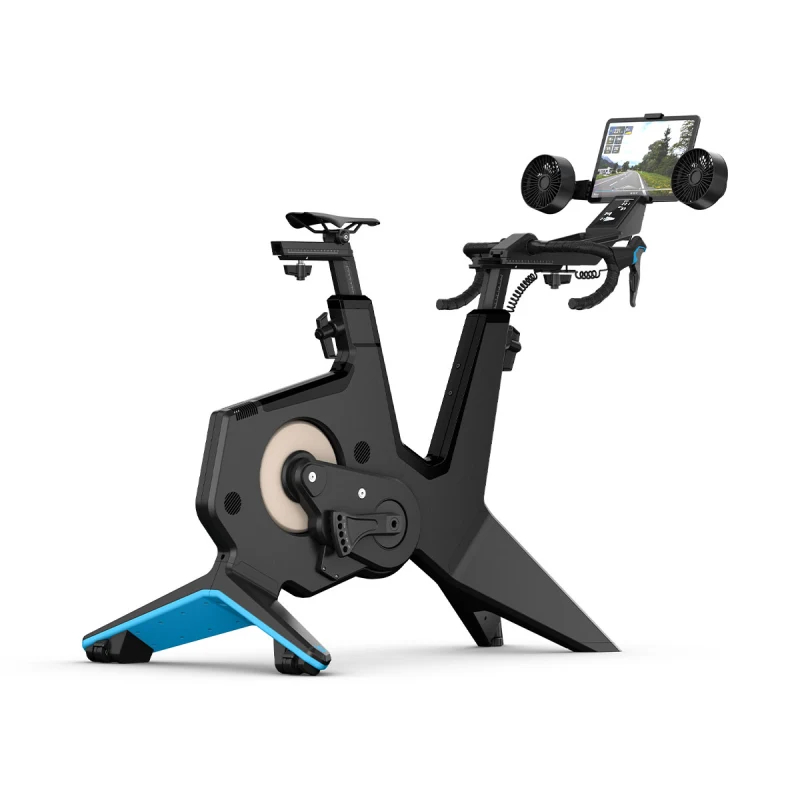
Neo Plus' heavy flywheel, double sided power and sturdy build make Tacx's option our pick for interval training.
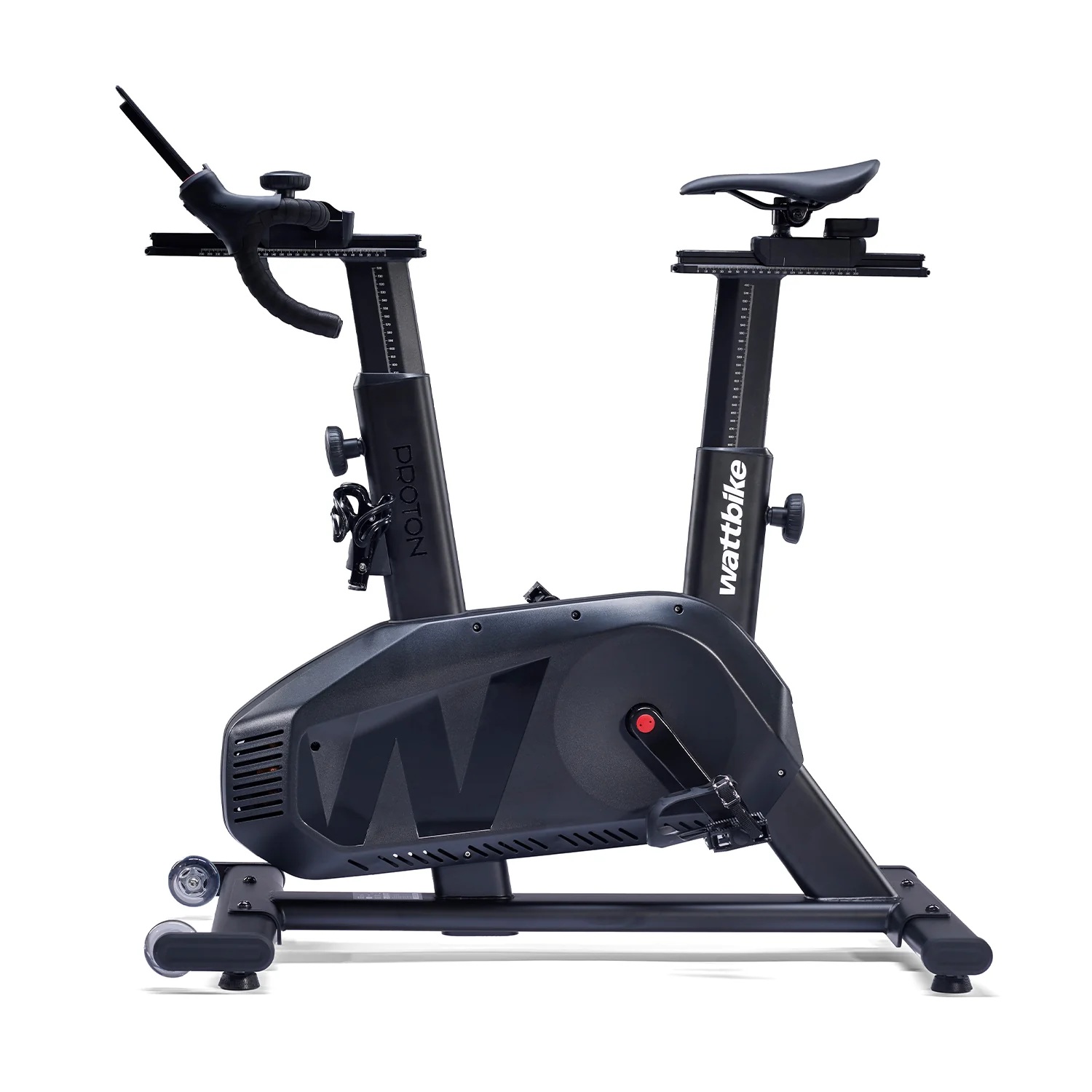
The Wattbike Proton is easy to adjust for a wide variety of rider heights and has a lower step-over than most.

Indoor training and racing has been a firm fixture of my weekly riding schedule since 2018. As part of my role at Cyclingnews, I am constantly changing my indoor training setup to use with the most popular platforms including Zwift, TrainerRoad, MyWhoosh and others. From smart trainers to smart bikes, I test them all for accuracy, responsiveness and how easy they are to live with.
Last updated October 2025 Newer products have been added and all the product specs have been checked to ensure they are all up to date. The Quick List has been extended to enhance the guide and improve navigation.
Best smart bikes
You can trust Cyclingnews
Best overall

Specifications
Reasons to buy
Reasons to avoid
✅ You want absolute top functionality: The Kickr Bike Pro tilts to replicate climbing and descending, plus virtual shifting is customisable to simulate the big three drivetrain brands.
✅ You want a customisable fit: A 5-point adjustment system allows you to adjust frame, setback and reach dimensions to match the fit of your outside bike.
❌ You're on a budget: If custom shifting and climbing gradients aren't important, you may be equally served by more affordable alternatives.
The Wahoo Kickr Bike Pro is the brand's range-topping smart bike. Its unique feature is the ability to tilt up and down, driven by a motor, so that when you hit a climb in the virtual world of a training app, the Kickr Bike Pro will change position, working the muscle groups you'd use on a real climb outdoors.
A virtual descent will tilt the Kickr Bike Pro downwards and its motor-driven resistance unit will kick in to give you a rest, as in the real world. It can simulate 15 percent downgrades as well as 20 percent ascents and its 2500 watts resistance should be enough for all but the most powerful cyclists.
The Kickr Bike Pro's realism extends beyond tilting, with virtual shifting allowing it to simulate the gear ratios of 11 or 12-speed drivetrains from Shimano, Sram or Campagnolo. Along with variable crank length and quick, app-driven position adjustment, you can set it up to match your outdoor bike.
Among other enhancements, the latest Kickr Bike Pro includes a Fizik saddle and bar tape, a new handlebar shape, on-bike Zwift controls and wi-fi connectivity for a more robust internet connection. You can also plug in the Wahoo Direct Connect dongle for a wired ethernet connection to help avoid wireless network dropouts and Wahoo adds Race Mode, which increases data transmission frequency tenfold.
The only thing lacking in the Kickr Bike Pro, which you get in the latest Kickr Move turbo trainer, is forward and back motion and side-to-side movement as you ride, for a potentially more realistic ride feel.
Check out our in-depth Wahoo Kickr Bike Pro review, where we put it to the test.
Best for integration
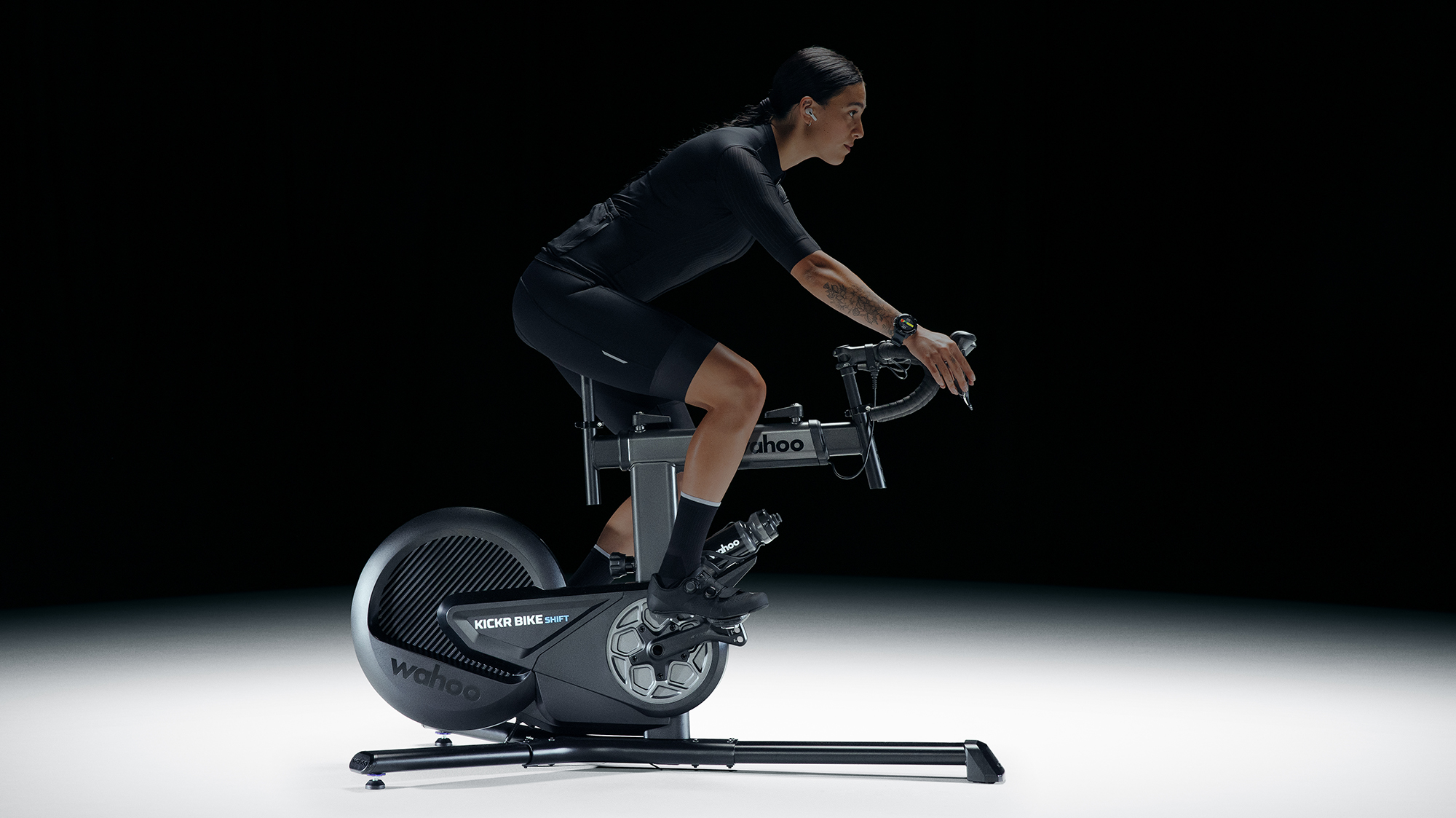
Specifications
Reasons to buy
Reasons to avoid
✅ You like Wahoo's trainers but want to pay less for a smart bike: You get all the Wahoo ecosystem integrations with a smart bike at a lower price.
✅ You are specific about fit: Like the top spec Kickr Bike Pro, the Kickr Shift has a 5-point adjustment system to ensure you're comfortable during your indoor workouts.
❌ You want a realistic gradient simulation: To keep costs down the Kickr Bike Shift foregoes a tilting mechanism that matches the virtual climbs and descents.
The Kickr Bike Shift is a lower-priced option than the Kickr Bike Pro, making it a more direct competitor with less premium smart bikes, while still offering the benefit of Wahoo's really well-designed and well-integrated ecosystem.
While the Kickr Bike Pro tilts on its axis to simulate climbs and descents, the Kickr Bike Shift has a static ride position. It benefits from a resistance system which is quieter than the Kickr Bike Pro. Although its maximum resistance is slightly less than the Kickr Bike Pro, this isn't something that most users are likely to find a problem.
As with the Kickr Bike Pro, the Kickr Bike Shift's levers can be programmed to replicate gearing from the major brands and there's easy fit adjustability, and in its latest iteration, it even has braking. The Kickr Bike Shift isn't the best-looking smart bike, but function takes precedence over form.
Wahoo offers tight integration between its smart bikes (both the Kickr Bike Pro and Kickr Bike Shift), its Wahoo X training environment and its Elemnt bike computers, so you can ride the Kickr Bike Shift or ride your bike outdoors if you prefer.
Read our Wahoo Kickr Bike Shift review for more.
Best for Zwift
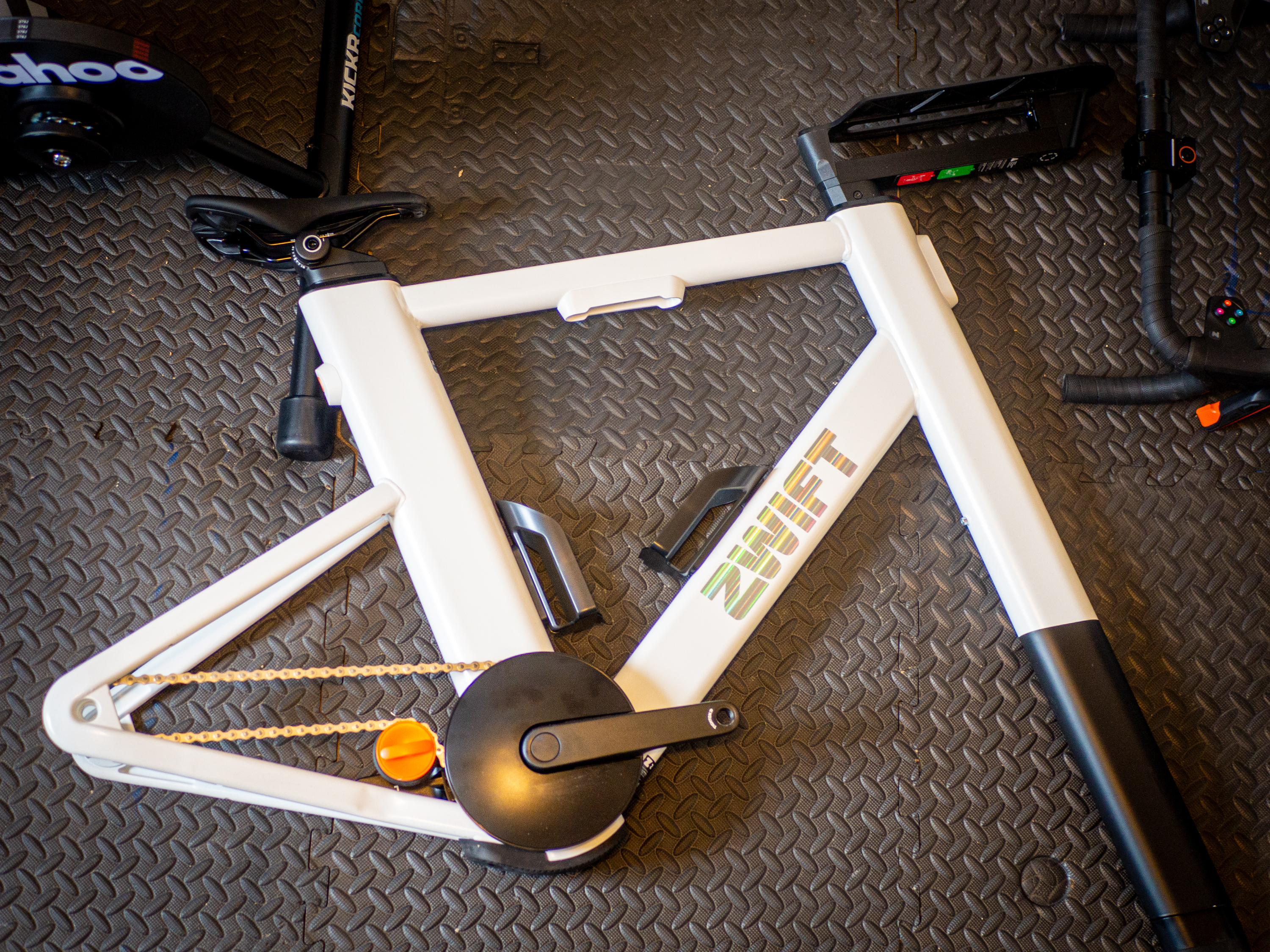
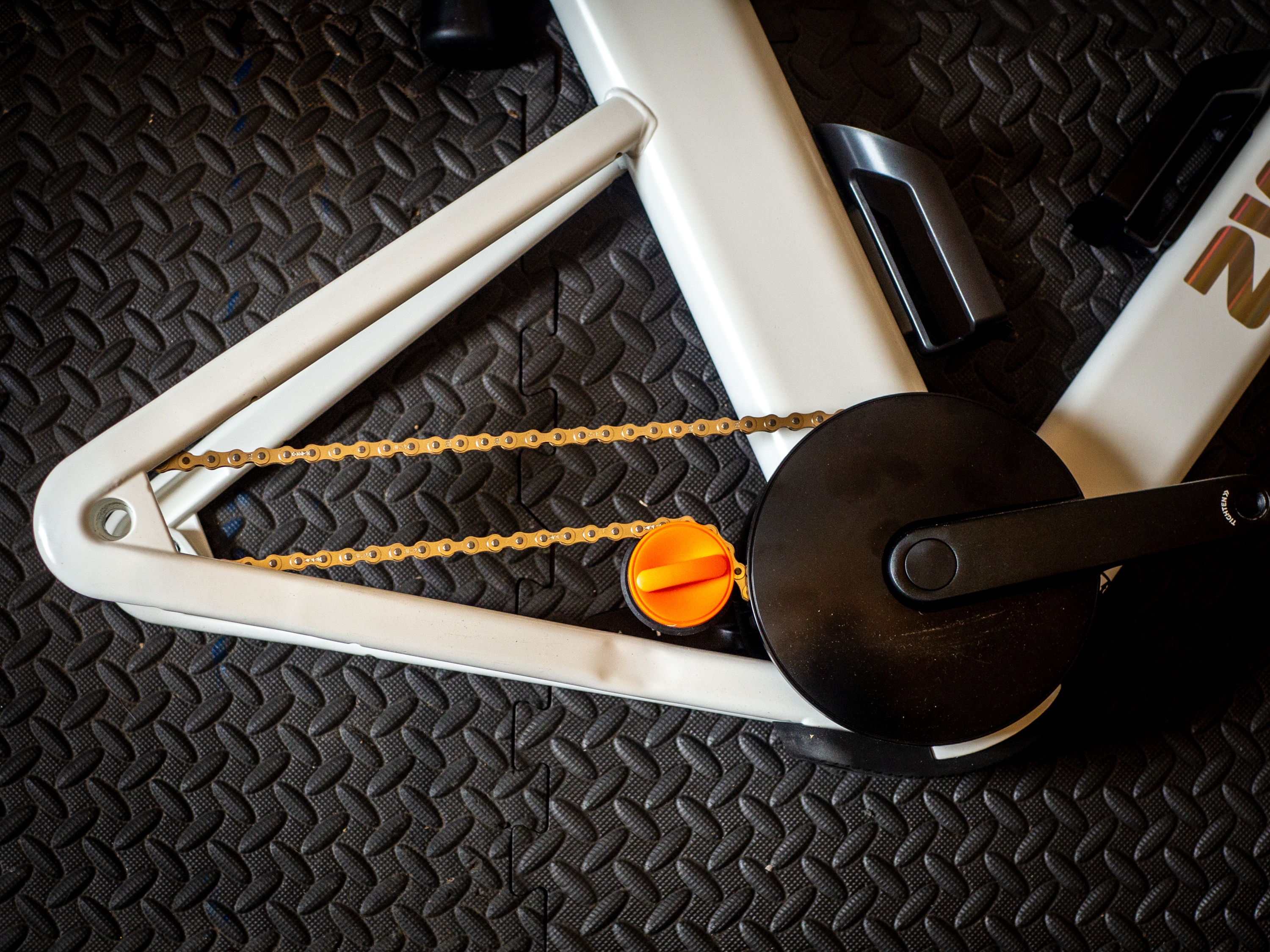
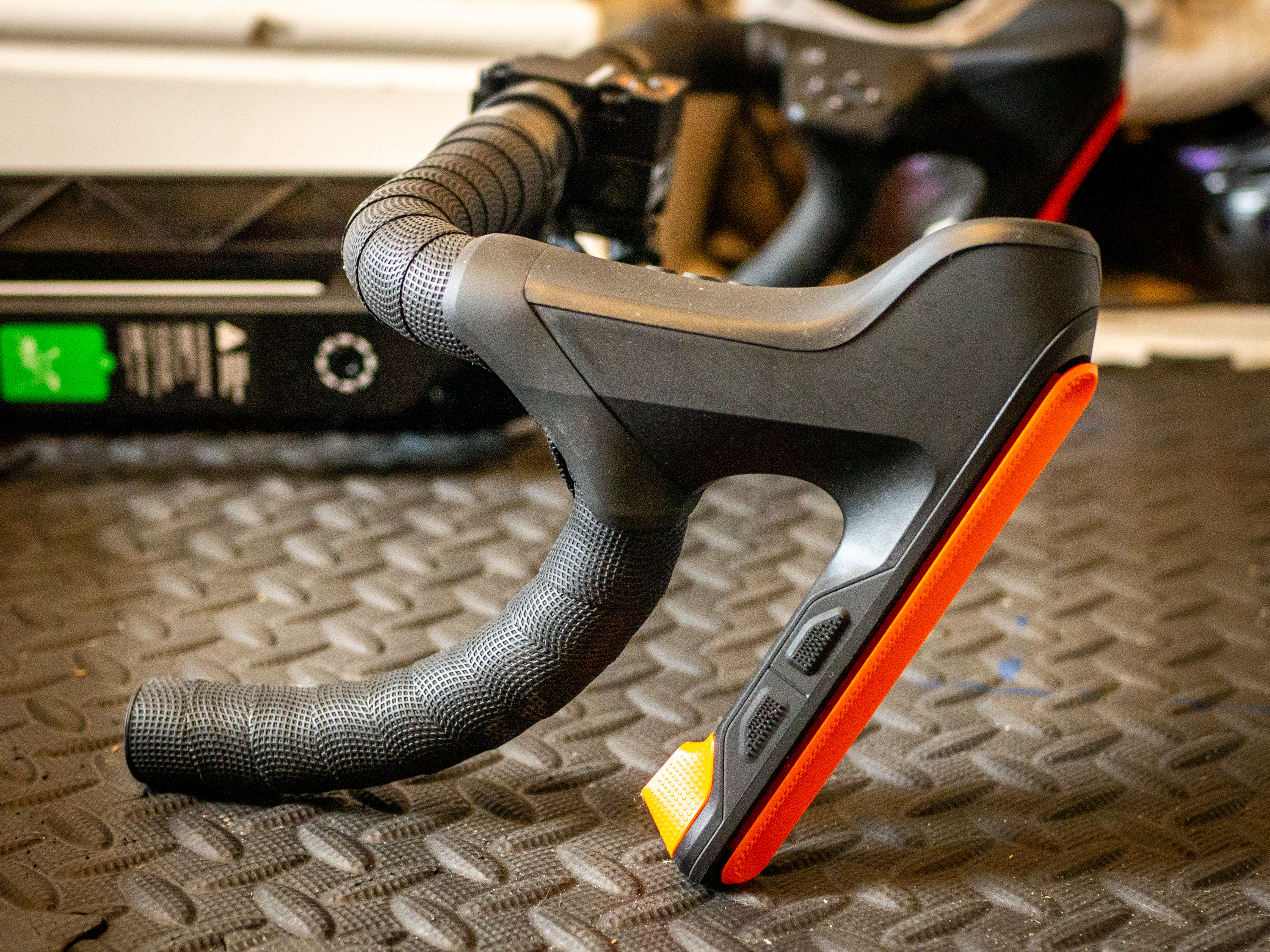
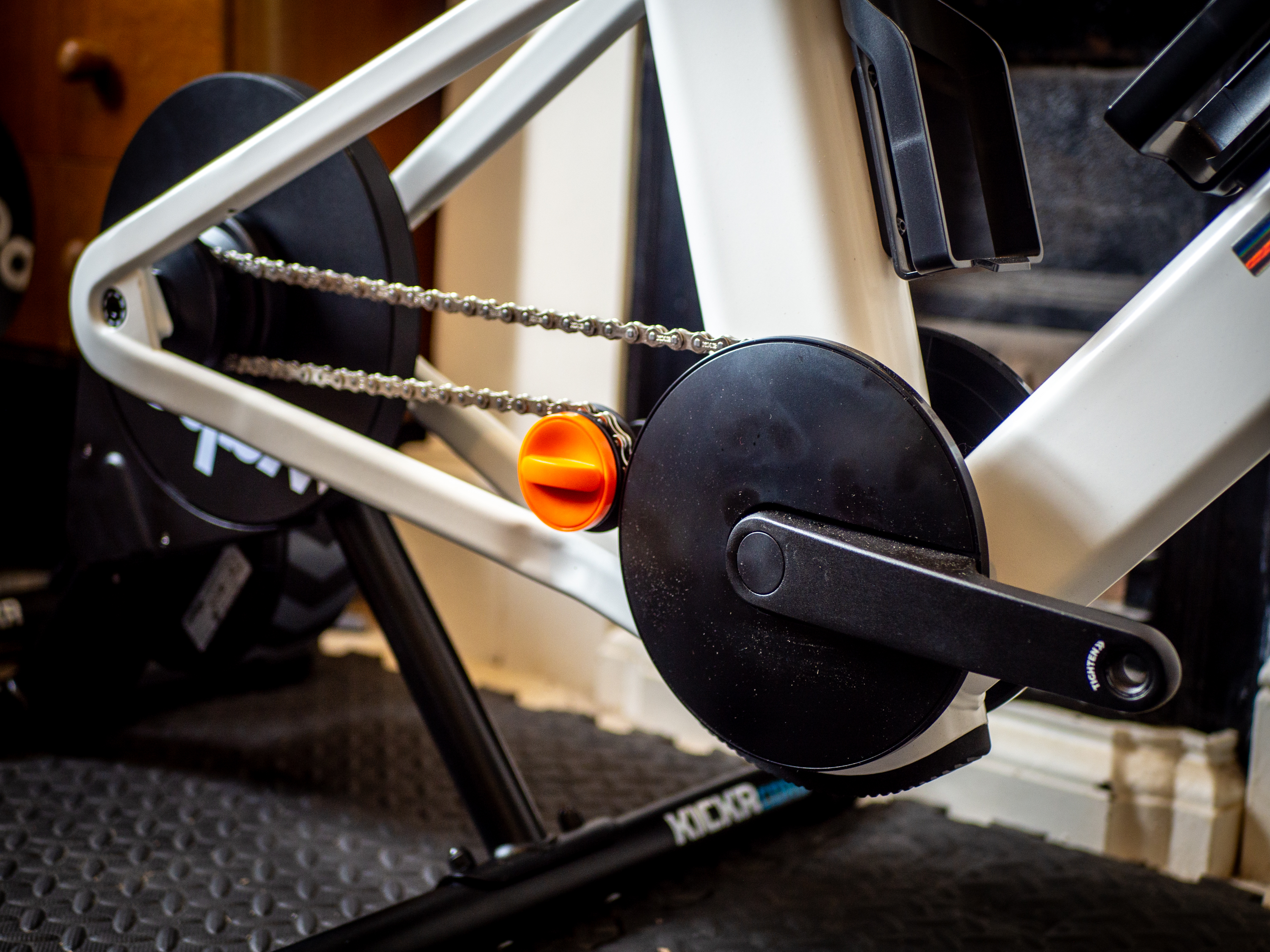
Specifications
Reasons to buy
Reasons to avoid
✅ You want the best Zwift experience: Dedicated built-in controls give full control of Zwift from the handlebars.
✅ You already own a Wahoo Kickr Core: If you already own a Kickr Core, Zwift sells the Zwift Frame and Zwift Cog to upgrade it to a Smart bike.
❌ If you aren't primarily using Zwift: The Zwift Ride is designed to be used with Zwift and we found compatibility issues when used with TrainerRoad and MyWhoosh.
❌ If you are picky about crank length: The crank length is fixed at 170mm; this will work for most riders, however, if you need a shorter or longer length, you'd best opt for a different smart bike.
Zwift is by far the most popular virtual riding platform, so it's no surprise that it has its own smart bike for riding, training and racing online. Rather than design a complete smart bike from the ground up, Zwift has paired with Wahoo and developed a modular system.
At the centre of the system is a highly rated Wahoo Kickr Core, which handles all the riding and smart features, to turn this into a smart bike. Zwift has created what's essentially a static bike frame that attaches to the Kickr Core. During testing, the frame offered a sturdy platform when riding. Saddle height (for riders between 152cm and 198cm tall) and reach can be adjusted, although the crank length is fixed at 170mm. There are two bottle cages in the frame for easy-to-reach refreshments while you tackle Alpe du Zwift.
Not only does the frame give you the set-and-forget benefits of a smart bike, but Zwift's Play control buttons give you virtual shifting functionality and full control of Zwift from the handlebars while you ride.
The simplified design is considerably more affordable than most dedicated smart trainers, although the controls are designed specifically for Zwift and aren't compatible with other training apps like TrainerRoad and MyWhoosh.
If you already own a Kickr Core that you use for Zwift and want to upgrade to a smart bike, Zwift sells the Frame, making it an affordable upgrade to your indoor setup and there is an increasing number of trainers from other brands now compatible with the smart frame.
Read our Zwift Ride review for more.
Best smart bike for pedalling analysis
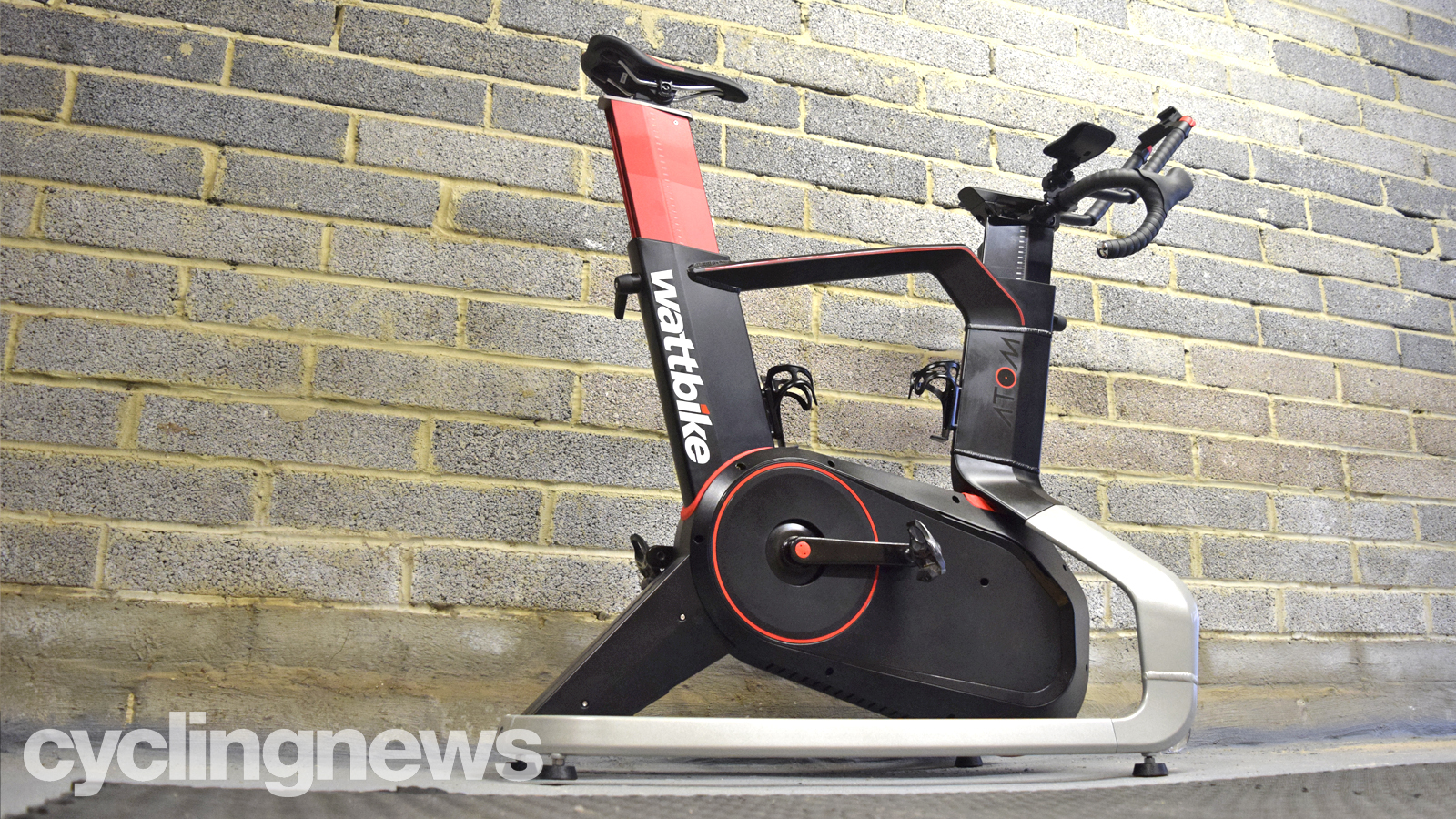
Specifications
Reasons to buy
Reasons to avoid
✅ You want a stylish smart bike: Despite having no wheels, the angular shapes make the Wattbike look fast.
✅ You want to train in the time trial position from the get-go: The handlebars come fitted with clip-on time-trial bar extensions, which double as an integrated tablet/smartphone holder.
❌ You want quick adjustability: The saddle height and handlebar height use lockable levers but the saddle angle, saddle setback, and handlebar reach will require you to get the tools out.
❌ You want simulated braking in apps, or tilting for climbs: Doesn't have any of the more advanced interactive features.
The Wattbike Atom is actually the second iteration of the Atom, and for a while was known as the Atom 'Next Generation'. But as the original has been replaced over time, the suffix has been dropped.
They look identical, but the newer model uses a magnetic resistance unit that is much quicker to respond to workouts. Their visual similarity makes it quite difficult to know which one you're looking at if shopping online, but the newer model comes with more accurate power measurement within +/-1%.
It looks great, is widely adjustable, and comes with a two-in-one road and time trial handlebar setup. The drop bars feature what amounts to dual control levers without the brake levers, and feature buttons which simulate shifting, while at the end of the time trial extensions, there's an adjustable screen holder that can hold smartphones and most tablet computers with ease.
The handlebar and saddle are adjustable; height is tool-free, but to change the fore and aft, you'll need hex/Allen keys. While the bike offers plenty of adjustment, the cranks are fixed at 170mm and can't be changed like some of the other smart bikes on offer.
Its power can be measured to within 1% accuracy, and it can handle 2,500 watts of output, which is more than almost everyone will need. With both Bluetooth and ANT+ connectivity, the Atom is universally compatible, meaning you can use any of the myriad training apps available - or any of the best bike computers - to control your workouts. The Atom also offers pedalling efficiency analysis to help you work on your pedal stroke.
If you're going to be exclusively using a smart bike on Zwift then the Zwift Ride may be a better option though, while the Wattbike Proton (see below) offers easier adjustment and a lower step-over.
Read our review of the Wattbike Atom review for full details.
Best smart bike for training
Specifications
Reasons to buy
Reasons to avoid
✅ You want detailed training analysis: The Neo Bike Plus offer accurate and responsive performance during intervals and simulating incline resistance.
✅ You want virtual gearing: The drivetrain can mimic Shimano, SRAM or Campagnolo groupsets, with options to customise the number of speeds, ratios and shifting characteristics.
❌ You want to keep your spending to a minimum: Tacx Neo Bike Plus is a major investment.
The Tacx Neo Bike Plus is the top product within the Tacx (owned by Garmin) range.
It uses a clever electromagnetic drive unit, meaning it can replicate the feeling of a 125kg flywheel for maximum realism. In usual riding, it doesn't feel much different to the ride feel of the Kickr or Wattbike, but it does mean you can use it without mains power, as it will regenerate the power from your legs.
At the front, there's a pair of built-in fans that can be aimed directly at your face. The airflow can be tailored to track your speed, power or heart rate, should you be after a more interactive experience. Unlike the older version of this bike, the shifters are now much more similar in shape to what you find on a normal road bike, and the buttons can be configured to replicate Shimano, SRAM or Campagnolo shifting.
A built-in display shows you which virtual cog you are spinning, in addition to metrics like speed, heart rate and power, and a tablet holder allows you to mount your iPad easily if you have one. The bike sees a standard saddle and bars, meaning these can be customised depending on your personal preference and all the fit adjustments can be made either with the included levers or a hex wrench. Cranks can be adjusted, with five holes built in ranging from 165 to 175mm.
The drive unit can generate up to 2,200 watts of resistance, simulate a 25 per cent incline and offer pedalling analysis to precisely measure how round your pedal stroke is. Tacx claims the power readings are within one per cent.
Read our Tacx Neo Bike Plus review for full details.
Best smart bike for value
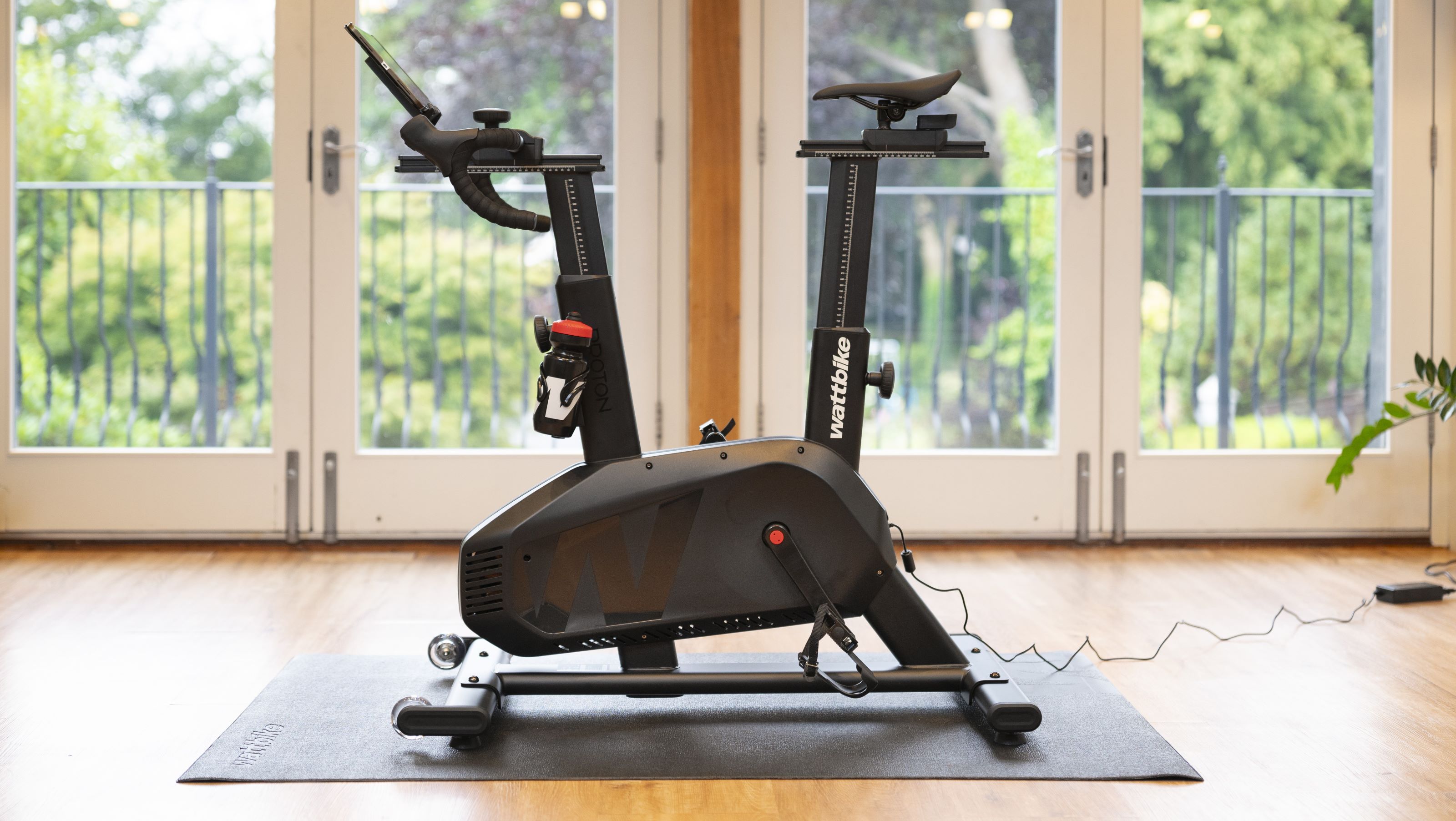
6. Wattbike Proton
Specifications
Reasons to buy
Reasons to avoid
✅ You want easy adjustment: Wattbike has designed the Proton to be easy to adjust for multi-user households.
✅ You want low step-over: The Proton is easy to get on and off due to its compact body.
❌ You want greater resistance: The 1800W resistance is fine for most people, but the Atom's resistance is greater.
❌ You want clipless pedals: The Proton has flat/strapped pedals, which you'd need to replace to clip in.
Wattbike's Proton slots into its range below the Atom, as a cheaper option. It's easier to adjust than the Atom, with tool-free adjustment catering for riders from 4'6" to 6'6", and the more compact body leads to easier step-over when you get on and off.
The peak resistance is lower than the Atom at 1,800W versus 2,500W and the design is more compact, so there's a slightly smaller footprint, making the Proton easier to find room for.
Otherwise, the Proton mimics much of the Atom's functionality, with an electromagnetic resistance unit and full connectivity via ANT+, BLE and it supports the FTMS protocol for automatic resistance changes.
The Wattbike Proton can simulate gradients from 0 to +25%, so there's plenty of room to test and perfect your climbing skills. You can simulate between one and 22 gear ratios.
On the minus side, the 170mm crank length is fixed and the Proton is fitted with pedals with straps, so if you want to ride with standard cycling shoes, you'll need to swap the pedals out.
Read our full Wattbike Proton launch story for more details.
The best smart bikes compared
| Header Cell - Column 0 | Connectivity | Type | Resistance | Adjustable crank length | Virtual shifting | USB charging port | Flywheel weight |
|---|---|---|---|---|---|---|---|
Wahoo Kickr Bike | Bluetooth, ANT+, WiFi | Smart bike | Electronic, electromagnetic | Yes | Yes | Yes | 9.5kg |
Wahoo Kickr Bike Shift | Bluetooth, ANT+, WiFi | Smart bike | Electronic, electromagnetic | Yes | Yes | No | 9.5kg |
Zwift Ride | Bluetooth, ANT+ | Smart bike | Electronic, electromagnetic | No | Yes (only on Zwift) | No | 5.4kg |
Wattbike Atom (Next Generation) | Bluetooth, ANT+ | Smart bike | Electronic, electromagnetic | No | Yes | No | Virtual 9.28kg |
Tacx Neo Bike Plus | Bluetooth, ANT+ | Smart bike | Electronic, electromagnetic | Yes | Yes | Yes (x2) | Virtual 125kg |
Wattbike Proton | Bluetooth, ANT+ | Smart bike | Electronic, electromagnetic | No | Yes | No | 8.05kg |
How to choose the best smart bike for you
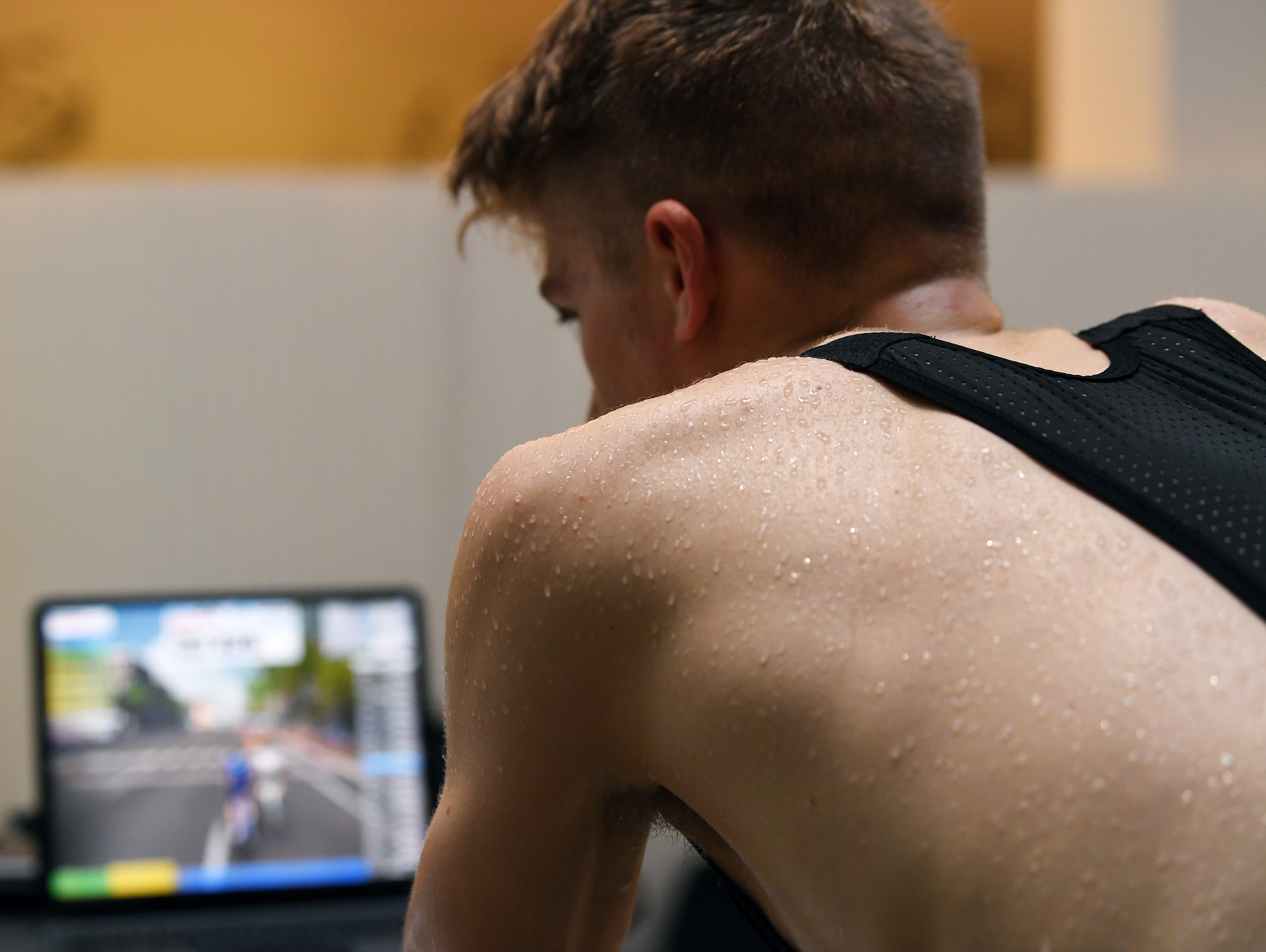
Here at Cyclingnews, we've reviewed an extensive array of smart bikes, including many of the best smart bikes and also Peloton options. We're keen indoor cyclists too, and can point you to the best indoor cycling apps and best indoor cycling workouts.
With so much time spent riding indoors, we understand what features to look out for in the best smart bikes to make the experience rewarding and hassle-free.
Smart bike or smart trainer?
There are plenty of advantages to choosing a smart bike, however, you might be better served by one of the best smart trainers instead. Choosing a turbo trainer vs a smart bike would offer most of the same features, but instead of an integrated bike, you would mount your own bike to a pared-down version that lets your bike provide the touchpoints.
However, with a smart bike, once you have replicated the fit from your road bike, all you have to do is jump on and start pedalling. There is no need to wheel your road-grime-splattered bike through the house and remove your rear wheel. Dedicated smart bikes are also noticeably more stable than your standard smart trainer-plus-bike setup, and most will be quieter too.
While these features are all well and good, we think the main selling point of a smart bike is the fact that it takes wear and tear away from your bike and components. Wearable parts like chainrings, chains and cassettes are expensive, which adds to the cost of a trainer-plus-bike package.
How much do smart bikes cost
Smart bikes, such as the Wahoo Kickr Bike Pro and Tacx Neo (both of which retail at £3,499/$3,999), have a high initial price, but the ongoing cost of ownership is zero, aside from any third-party apps you might choose to subscribe to.
There are, of course, more affordable options. Smart bikes like the Wattbike, Kickr Shift or previous generation smart bikes will still offer plenty of performance for most indoor riders without some of the more advanced features like Zwift controls, gradient replication and drivetrain customisations.
It's also worth mentioning that many of the best smart trainers can offer similar advanced features at a lower price, although, as mentioned before, they come with their own pros and cons.
Smart bike or exercise bike?
Both options offer the ability to train in the comfort of your own home, however, I would buy a smart bike for several reasons. Sure, they come with a higher initial cost, but once that cost is paid, the ongoing expense is much lower / zero, and the variety of apps they can use is significantly higher.
To compare: The most popular third-party app, Zwift, has a monthly subscription of £17.99 / $19.99, whereas the most popular of the closed ecosystems, Peloton, is £39.00 / $44.00 per month. That's a price difference of £21.01 / $24.01 per month, or £252.12 / $288.12 per year, every year.
Smart bikes also offer 'open' compatibility with third-party indoor cycling apps, meaning if you get bored with one, you can try another. Most smart bikes are even accompanied by a free app from the manufacturer if you want to keep the monthly costs down. With smart spin-style bikes like Peloton, you are buying into a closed ecosystem, so if you fall out of love with the entertainment on offer, there are no alternatives short of reverting to the functionality offered by 'basic' exercise bikes.
What's more, technologically, smart bikes are more advanced. They use a power meter to measure your output and they can control resistance electronically, meaning software can set your resistance automatically to help you follow set workouts or hold a specific wattage. Freewheels allow you to coast downhill, and extra features such as tilting, braking and steering add to the realism and interactivity of the ride. It's closer to the experience of riding outdoors, and for us, that's what we want from our indoor cycling, though of course, we appreciate that not everyone is the same.
For a feature-rich system, we'd go for the Wahoo Kickr Bike Pro, but for maximum value for money, it's hard to overlook the Wattbike Atom if you can get it where you live. Dedicated Zwifters might gravitate to Zwift Ride for its lower price and built-in Zwift controllers.
In addition, we believe the more 'basic' exercise bikes will always have a place in the market for those who can't justify the higher investments of a smart device. They forego any of the interactivity, but there are plenty of workout videos you can follow on YouTube, or you can simply lose yourself in Netflix while pedalling.
Whichever you choose, if it gets you pedalling more and helps you to get fitter or feel better, then in our opinion, it's a win.
How we test
Like many other cyclists, when winter comes rolling around the lure of indoor riding and training becomes increasingly strong. Choosing the best smart bike is going to give you the most convenient indoor experience.
These days, indoor training is more than simply burying yourself in intervals. With racing and social rides becoming increasingly popular, there are lots of factors to consider when reviewing the best smart bikes. Initial set-up is important. We build and set up each smart bike, dialling in our preferred fit and ensuring it connects reliably to secondary devices and services.
Once riding, we will check ERG interval performance with varying lengths of intervals using TrainerRoad before joining some racing and free riding on Zwift and MyWhoosh to see how the hardware and software handle varied riding situations.
To verify the smart bike's power readings are correct across various power durations, from short sprints to long steady efforts, we run secondary power meters to make sure the readings from the trainer are correct.
For more details of our approach to testing and reviews, head to our How We Test page.
The latest race content, interviews, features, reviews and expert buying guides, direct to your inbox!

Josh is Associate Editor of Cyclingnews – leading our content on the best bikes, kit and the latest breaking tech stories from the pro peloton. He has been with us since the summer of 2019 and throughout that time he's covered everything from buyer's guides and deals to the latest tech news and reviews.
On the bike, Josh has been riding and racing for over 15 years. He started out racing cross country in his teens back when 26-inch wheels and triple chainsets were still mainstream, but he found favour in road racing in his early 20s, racing at a local and national level for Somerset-based Team Tor 2000. These days he rides indoors for convenience and fitness, and outdoors for fun on road, gravel, 'cross and cross-country bikes, the latter usually with his two dogs in tow.

